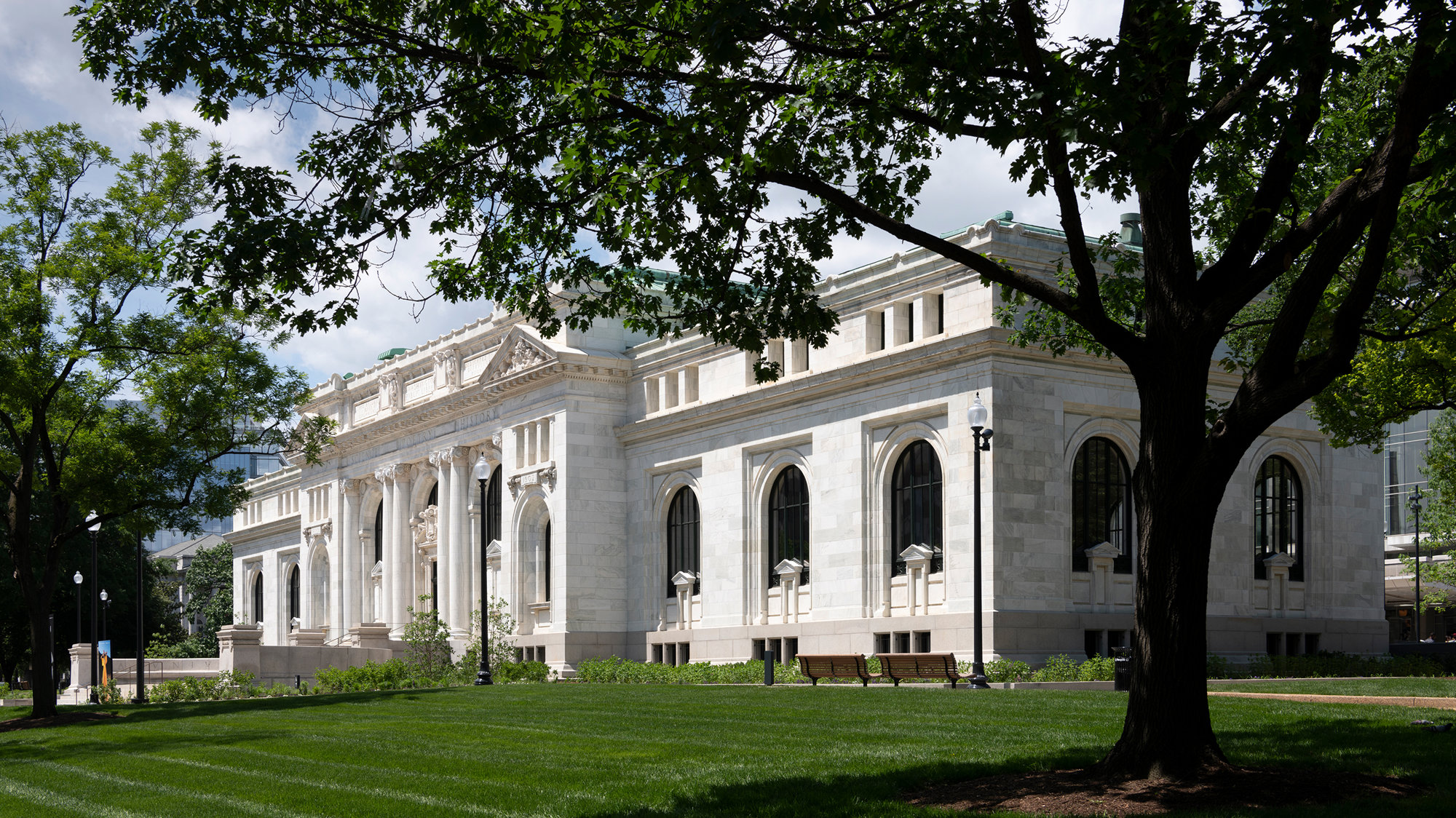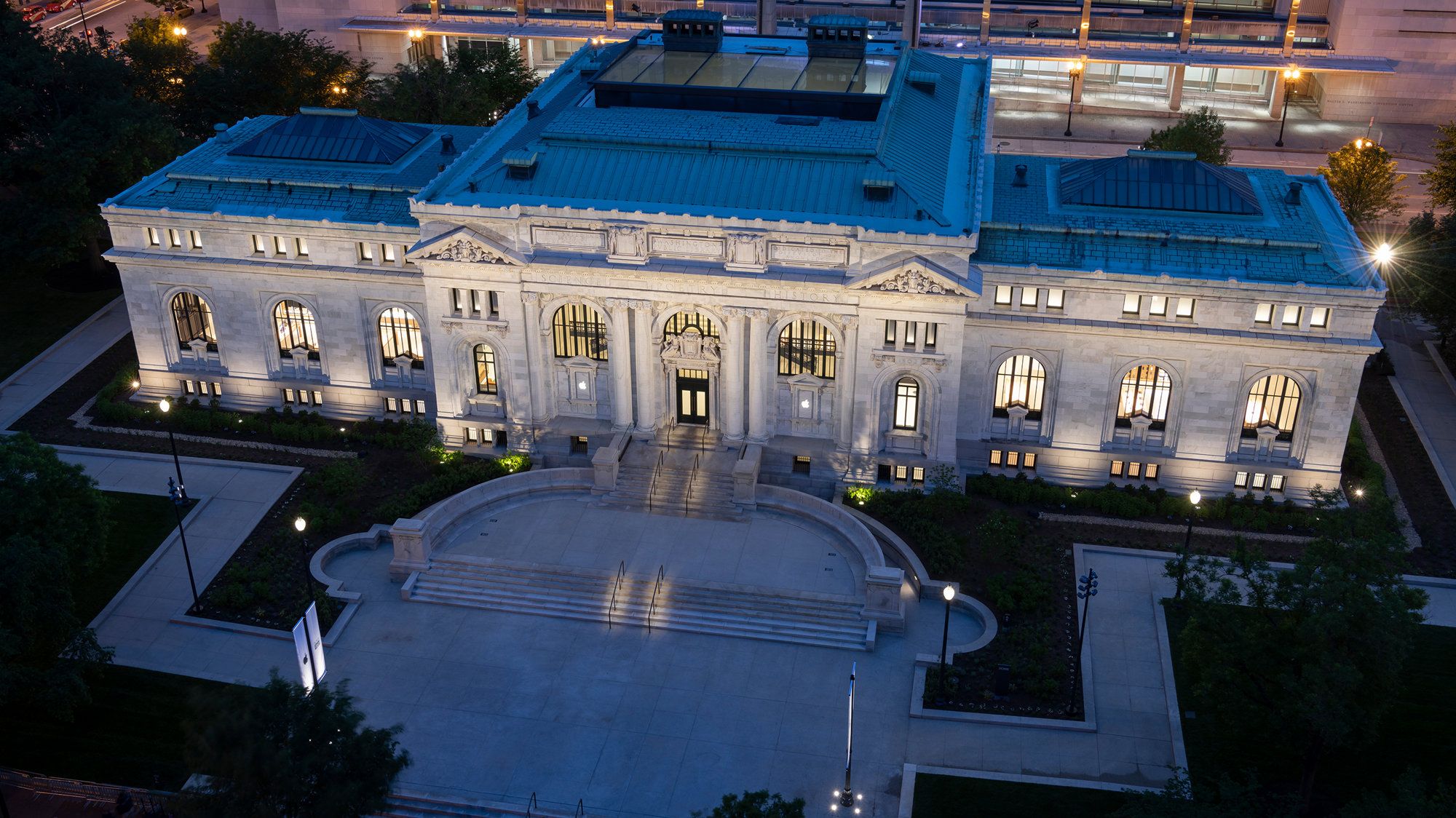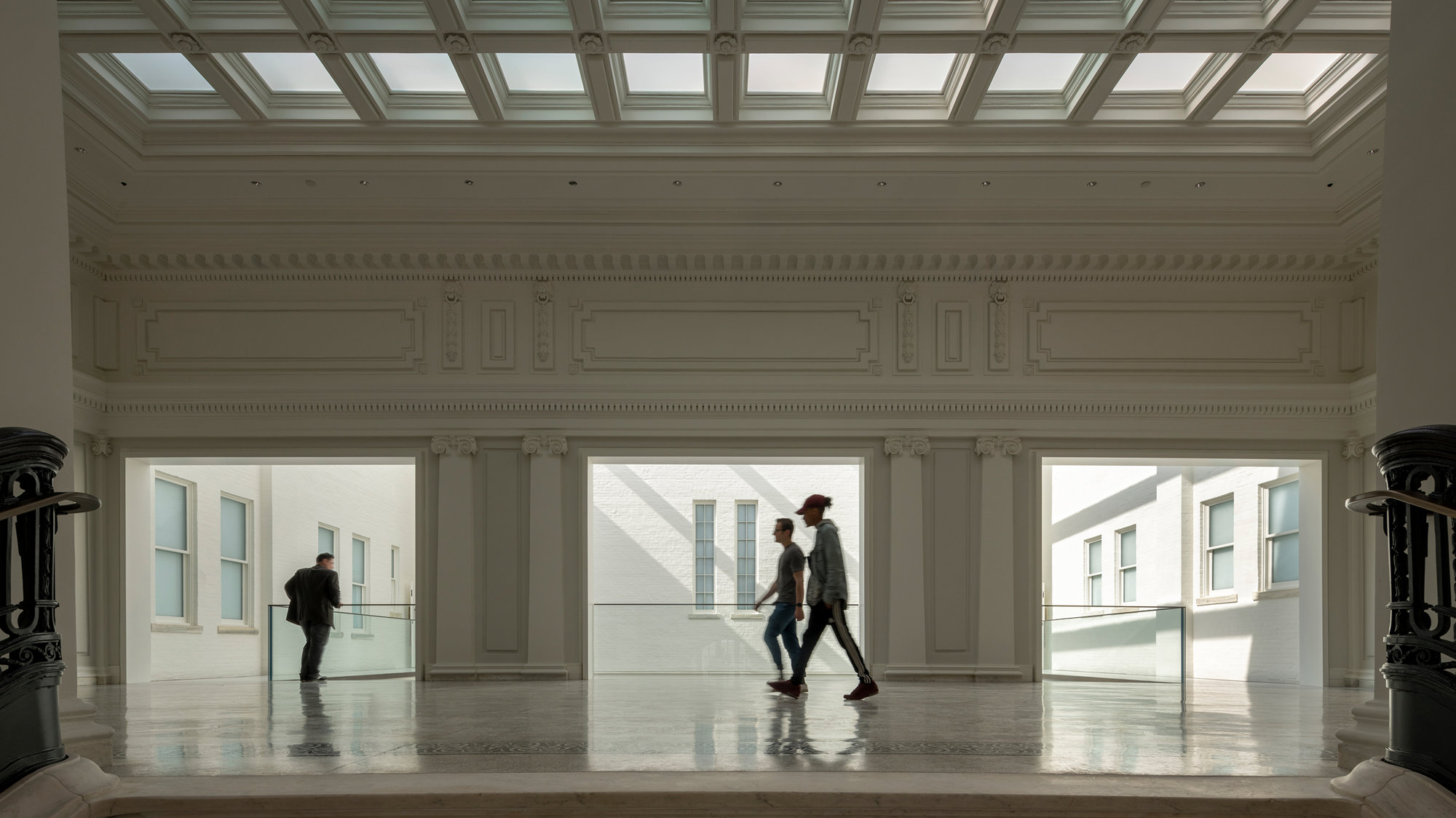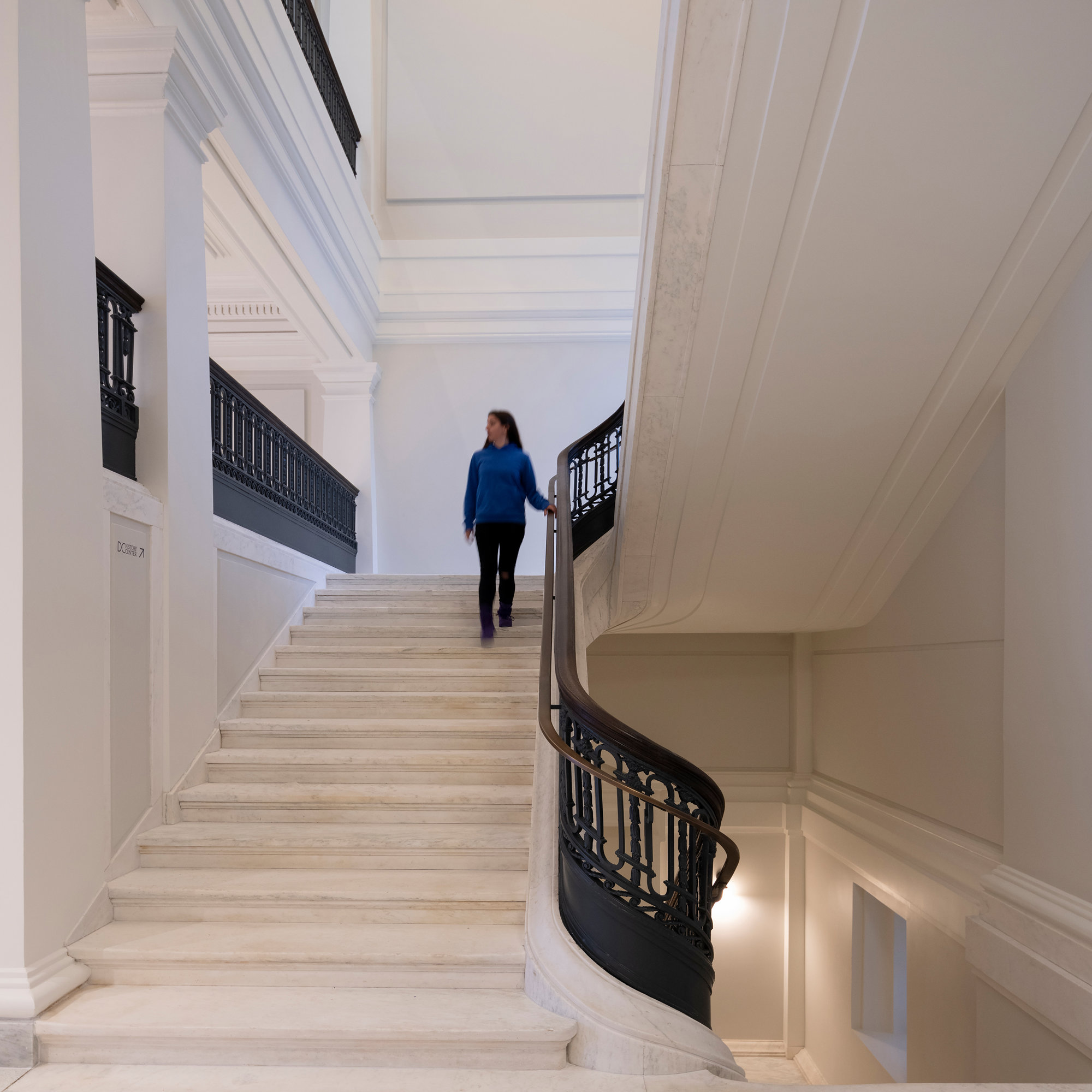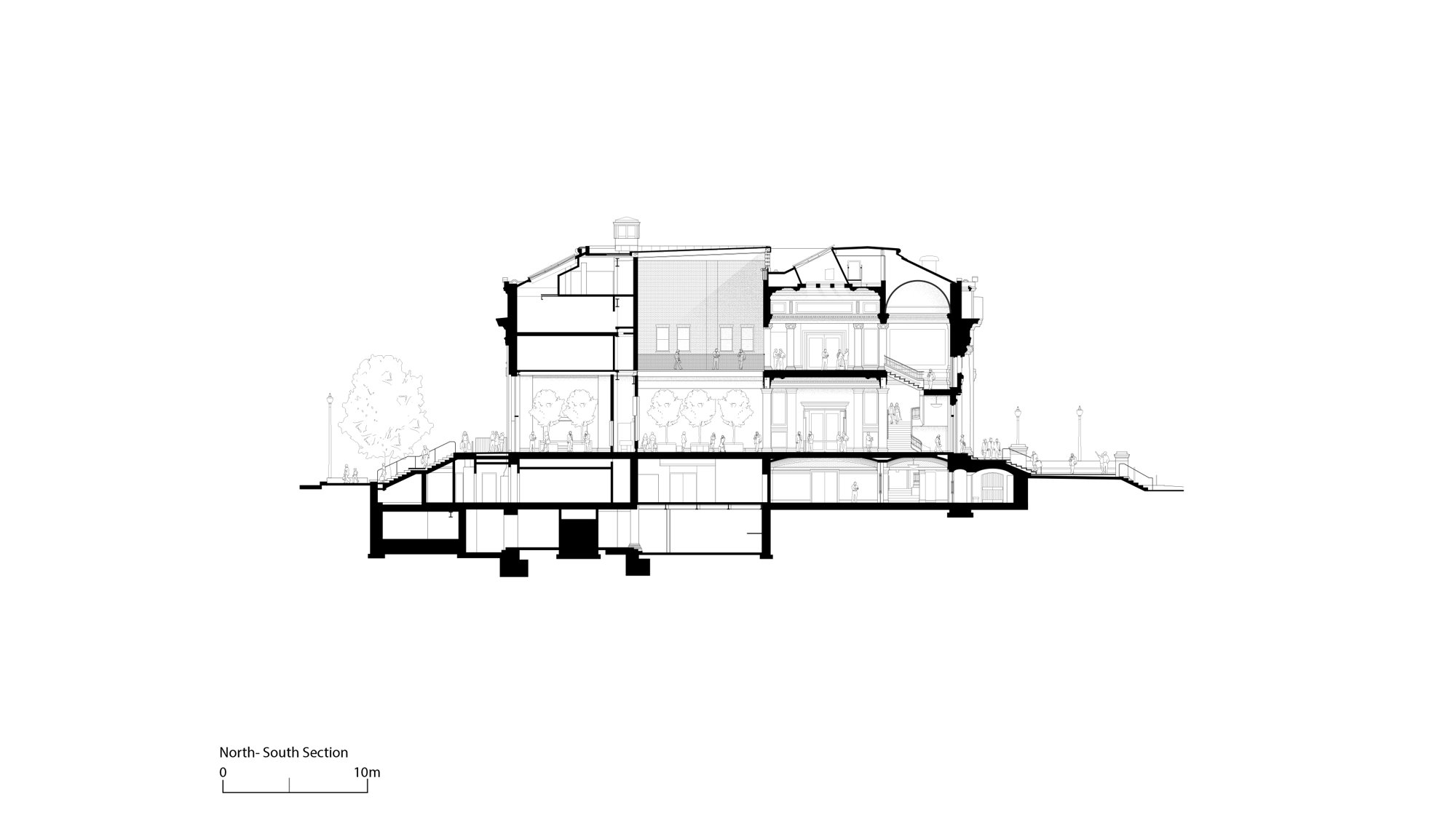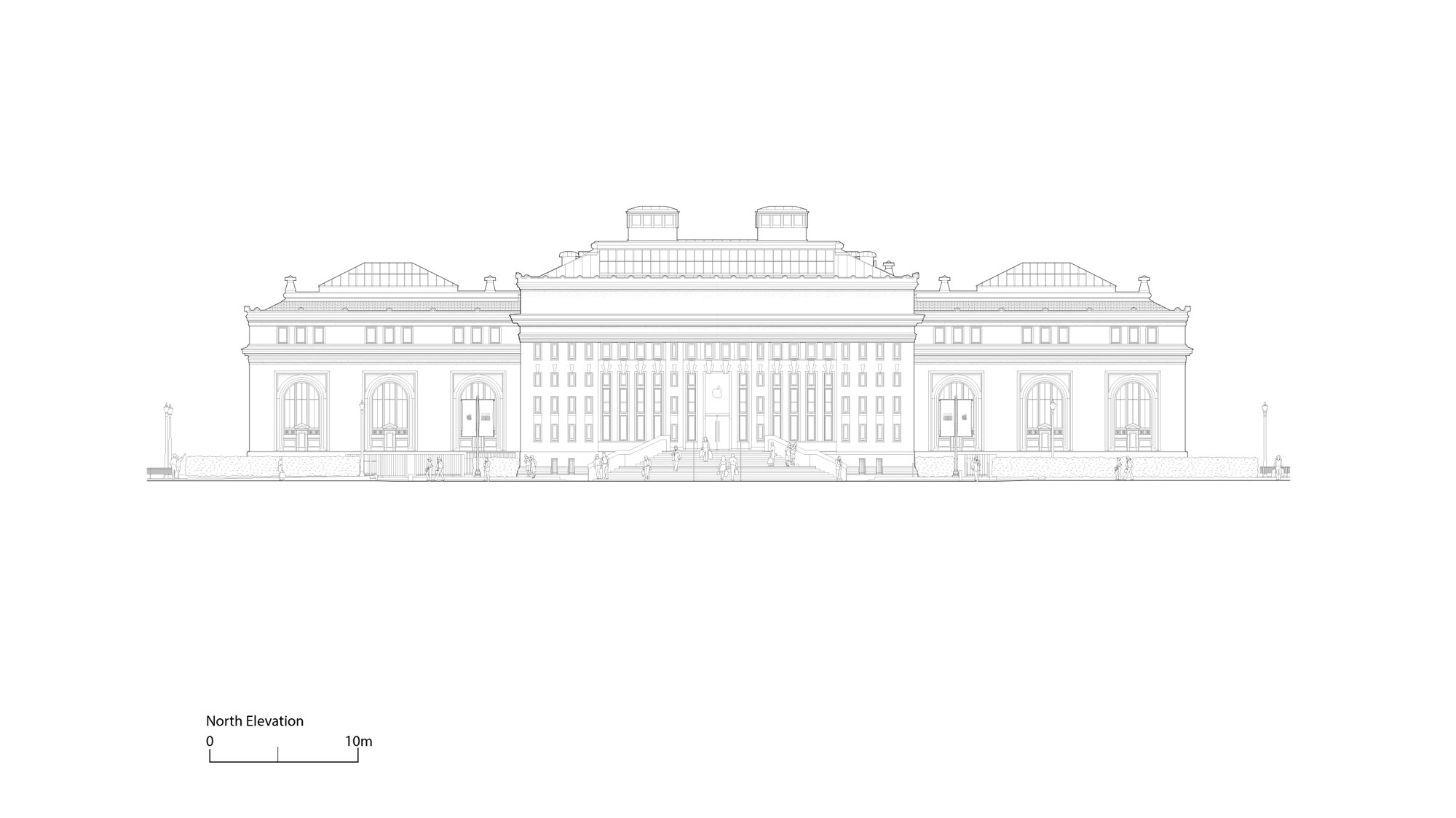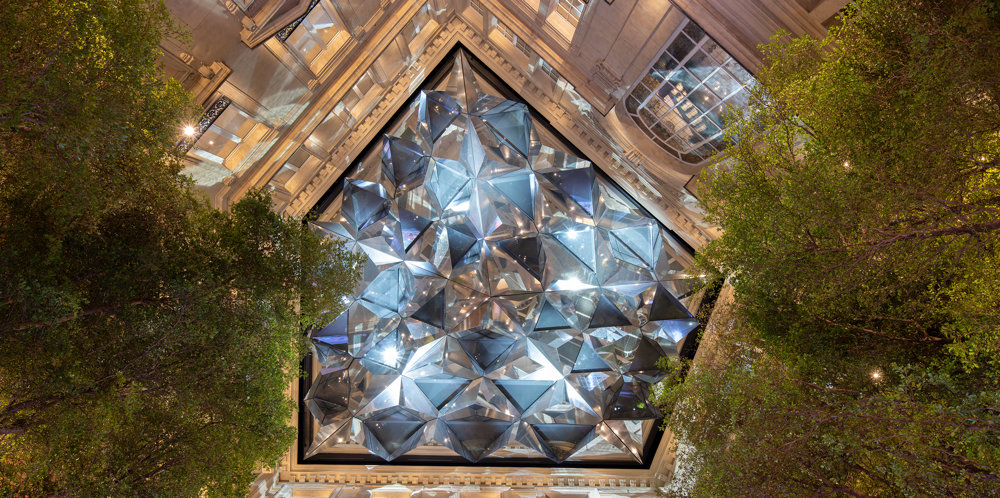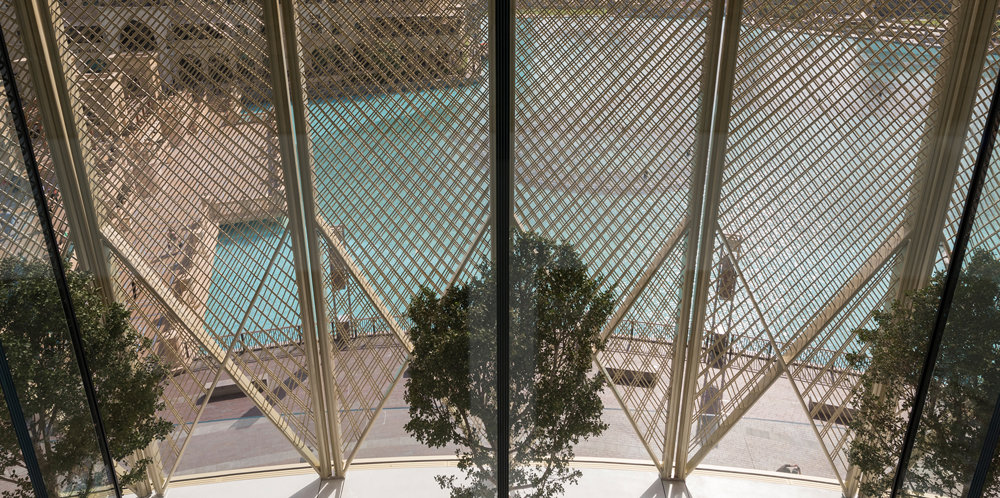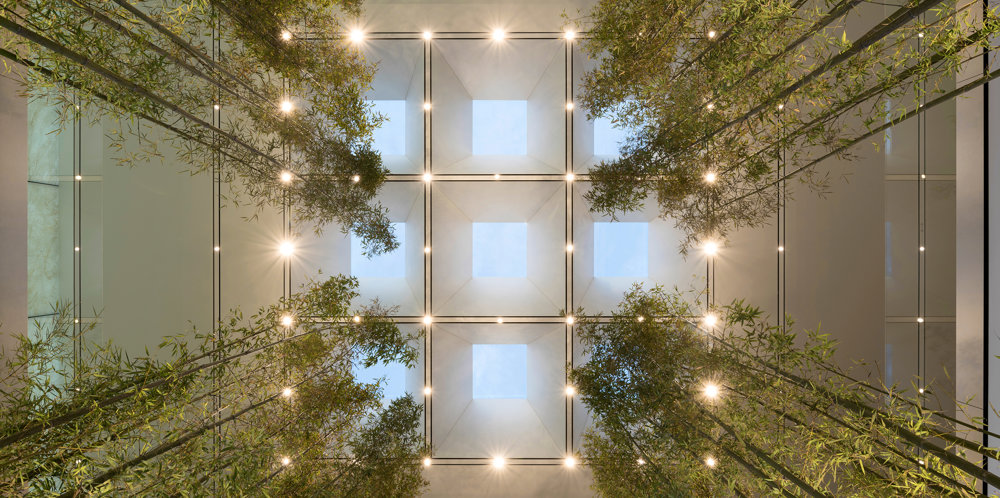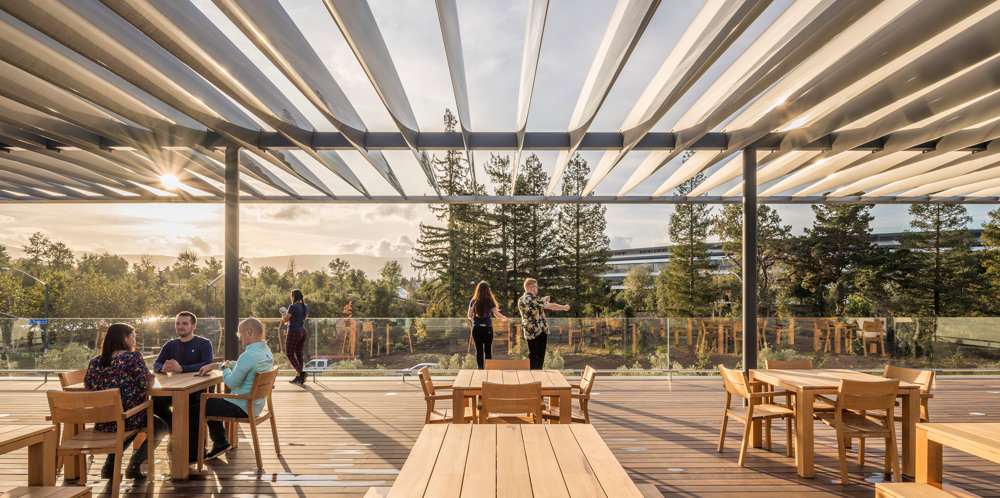Located at the heart of Washington DC, Apple Carnegie Library marks the revitalisation of an important monument in the city’s history. As the city’s first public library, and its first desegregated public building, the Carnegie Library of Washington DC played a central role in community life for over 70 years since its opening in 1903. After a period of neglect, Apple Carnegie Library continues the traditions of the building by creating a new platform for learning, performance and art for a new generation.
The listed Beaux-Arts style building has been restored to its previous grandeur, with entrances on both sides of the north-south axis, creating an inviting urban route through the building. The southern entrance, which was the original entrance to the library, is fronted by a grand plaza that will host public concerts and events. The heart of the building has been transformed into a soaring double-height space, capped by a new skylight that brings natural light deep into the interior spaces. Here, the Forum forms the vibrant, creative hub of the building, where experts from various fields will entertain and inspire the local people. The audience can view the performances and workshops from two levels, creating a lively and interactive experience.
The entire palette of materials used in the interior was chosen to suit the historic surroundings, inspired by the distinctive early 20th century detailing in the building. This retrofit project is driven by a very sustainable agenda, which included upgrading the historic building by reintroducing natural ventilation and the generous use of daylight, as well as a commitment to locally sourced materials.
A grand staircase leads to the DC History Center on the second floor and the Carnegie Gallery in the basement, which displays historic photographs and documents for the public to learn about the origins and history of the building. Apple Carnegie Library also reinvigorates the surrounding park, while enhancing the northern entrance to create a clear route through the building that strengthens the connections between the northern and southern ends of the site.









